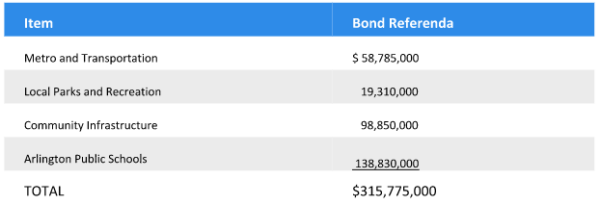 Peter’s Take is a weekly opinion column. The views and opinions expressed in this column are those of the author and do not necessarily reflect the views of ARLnow.com.
Peter’s Take is a weekly opinion column. The views and opinions expressed in this column are those of the author and do not necessarily reflect the views of ARLnow.com.
In July, Arlington received an award as the top digital county in the nation for its population size (150,000-249,999).
Among the reasons:
The County’s Open Government Program … was lauded for creating more accessible and transparent interactions with departments and services. Key elements of the program include the Open Data Portal, expanding civic engagement through webcasting of commission meetings, and launch of the My Arlington app for mobile users.
But, where should Arlington go from here?
Arlington already has held a panel discussion on next steps. The panel included private sector and Arlington County government participants.
In two videos, the panel discussed how digitization is likely to change Arlington substantially between now and 2050. While the issues are complex and overlapping, one useful way to look at them is to consider how digitization is likely to:
- Change how private individuals and firms function, and why those private sector changes will require major changes in Arlington government policies and operations.
- Enable the Arlington government to interact more transparently and productively with its citizens.
Private sector change
In general, the pace of transformative change driven by private sector digitization means that the county should avoid adopting overly-prescriptive master plans that could inadvertently stifle future private sector innovation.
Retail
While consumers currently make about 7 percent of their purchases online, panel participants predicted that by 2050, this percentage will rise to 40-60 percent. The obvious result: retailers’ needs for brick and mortar stores will decline substantially. For future planning purposes, the county should avoid policies that will incentivize excessive retail brick and mortar store growth.
Office
The commercial office market will continue to be transformed by increasing demand for flexible working and living arrangements like WeWork and WeLive. The county should be appropriately flexible in adjusting its zoning and land use policies to enable this increased demand — especially when such adjustments will facilitate rental of existing vacant office space.
Transportation
Ride sharing will continue to transform transportation, and self-driving vehicles are likely to do so soon as well. The county should adjust its transportation, transit, parking and all other relevant policies to take advantage of these changes.
Citizen-government interactions
In general, new digitization tools enable new ways in which county government and its citizens can interact. The most important advice from panel participants: use these tools to find out what citizens prefer rather than just telling citizens what the government has decided. This often should be done by accurately defining all options, together with the costs and benefits of each, and asking residents for their preferences using statistically-valid survey techniques.
For some, citizen-government interactions can be entirely in cyberspace. How about virtual “Open Door Mondays“? For others, a physical space (like community centers and libraries) will continue to be important.
Big Data is transforming the way a local government like Arlington can improve the quality of life for its citizens.
Conclusion
One way you can participate in discussing these issues is to attend a meeting on Tuesday, October 11, from 7 to 8:30 pm in the Shirlington Library auditorium. The meeting will feature a presentation by Shawn DuBravac. Shawn was one of the panel participants, and is the author of “Digital Destiny: How the New Age of Data Will Transform the Way We Work, Live, and Communicate.”




